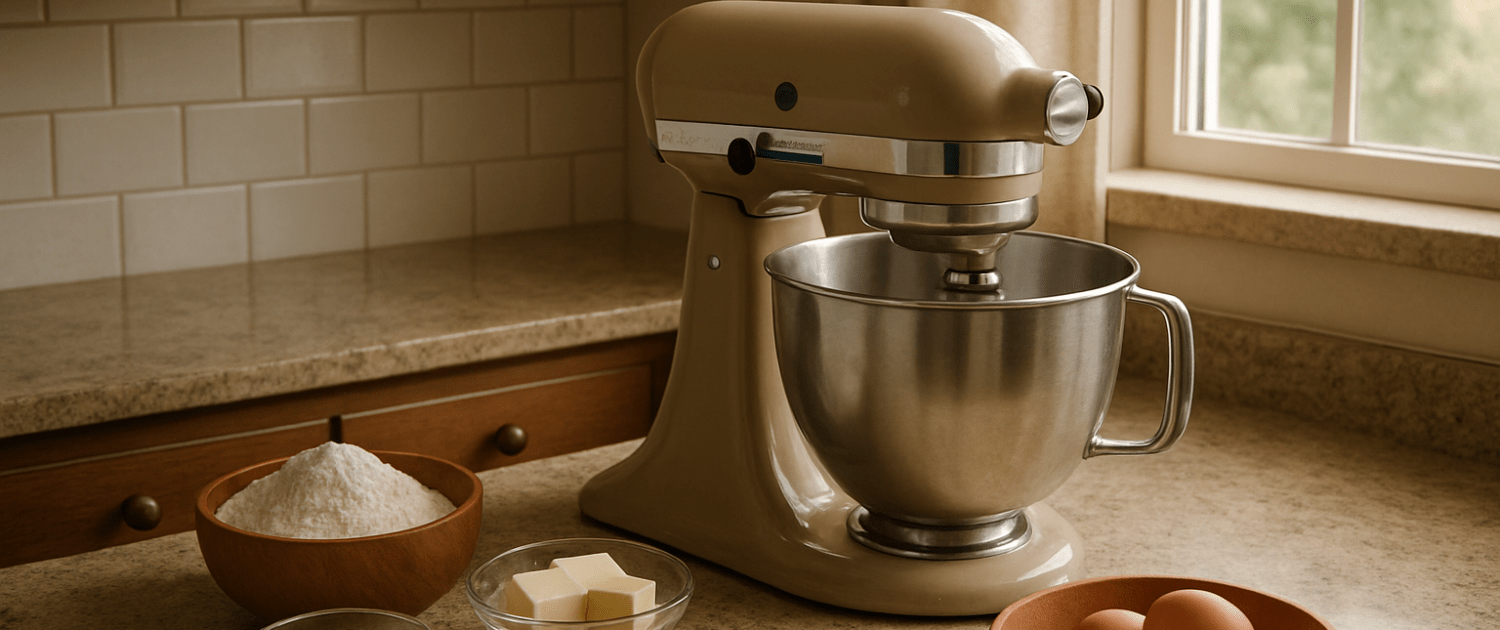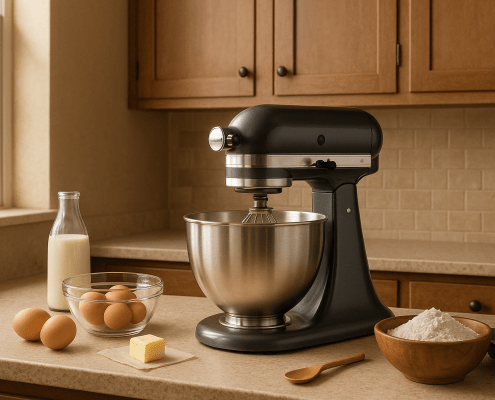Using a KitchenAid Stand Mixer for Commercial Use: Key Tips
Steven E / Thursday September 4, 2025
So you’ve got a KitchenAid stand mixer that whips cream like a dream and kneads dough without complaint, and you’re wondering if it can pull double duty at your café, bakery pop-up, catering gig, or food truck. Short answer: It can, if you understand its limits, set up the workflow right, and plan for maintenance. Think of it like bringing a reliable compact car into rideshare duty: totally doable for everyday routes, not the best choice for hauling bricks all day.
This guide walks you through the real-world considerations: capacity, duty cycle, sanitation, safety, workflow, power, maintenance, and when it’s time to step up to a true commercial mixer. Grab a coffee and let’s make a plan.
Start With Your Volume
Commercial kitchens live and die by throughput. Before you bet your menu on a stand mixer, do a quick reality check:
- Daily output. How many batches will you run per shift? Ten? Fifty?
- Batch size. Are you mixing two cakes at a time, or forty cupcakes?
- Mix time. How long does each batch actually take from “add ingredients” to “ready for pans”?
A stand mixer shines when you’re doing small, frequent batches, frosting refills, whipped cream on demand, quick batters, or a few loaves of enriched dough. It strains when you expect continuous, heavy-duty production (think endless pizza dough or bagel dough at high hydration). If your menu leans “small-batch, make-fresh,” a KitchenAid can be perfect.
Pro tip: If one batch takes ~4 minutes (mix + scrape + reload), you can theoretically run about 15 batches per hour. Reality trims that number with setup, cleaning, and traffic, so plan for less and protect your schedule with buffer time.
Pick the Right Style: Tilt-Head vs. Bowl-Lift
For commercial use, bowl-lift models generally win:
- Stability: A fixed head and lifting bowl handle heavy loads better.
- Capacity: Larger bowls are easier on the motor for bread and cookie dough.
- Workflow: Less head tilting means faster swaps in tight spaces.
Tilt-heads are fine for lighter tasks, meringue, whipped cream, buttercream, and cake batters. But if you’re doing dough daily, bowl-lift is the safer bet.
Duty Cycle, Heat, and “Mixer Fatigue”
Home appliances are designed for intermittent use: run a batch, rest a bit, repeat. In a commercial setting, it’s tempting to keep the mixer humming nonstop, but continuous heavy use builds heat in the motor and gears. Over time, heat thins grease, stresses components, and shortens life.
Best practices:
- Alternate tasks. After a heavy dough, do a lighter task (whipped cream, frosting) or give the mixer a short rest.
- Use lower speeds to start. Speeds 1–2 reduce sudden torque spikes; ramp up only as needed.
- Watch the housing. If it’s getting hot to the touch or you smell “hot electrics,” pause and cool down.
- Don’t block airflow. Leave space around the mixer; don’t drape towels over vents.
Sanitation, Compliance, and Food Safety
Commercial kitchens have higher standards than home use. Build sanitation into your workflow:
- Materials: Stainless bowls and stainless/nylon-coated beaters are easiest to sanitize. Avoid leaving uncoated aluminum attachments wet (they can oxidize and discolor).
- Between batches of allergen-heavy items (nuts, gluten-free, dairy-free), wash and fully dry bowl and beater.
- After raw eggs/dairy, wash with hot soapy water; sanitize stainless where appropriate.
- Avoid soaking the head. Wipe the body with a damp cloth; never spray into vents or seams.
- Labeling: Keep a dedicated set of attachments for allergen-friendly prep if your menu requires it. Mark them clearly.
- Local code: Some jurisdictions require NSF-certified equipment in inspected kitchens. If inspections are part of your operation, look into models that carry appropriate certifications and make sure your cleaning SOPs align with your HACCP plan.
Daily Care, Deep Clean, and Preventive Maintenance
Treat your stand mixer like a line cook you want to keep around:
Daily (or after messy tasks):
- Unplug, remove bowl/attachment, and wipe the head and base with a damp soapy cloth; follow with a water-damp cloth, then dry.
- Detail the planetary hub and drip ring, sticky frosting and flour love to hide here.
- Wash and dry bowls and attachments thoroughly. Store dry.
Weekly:
- Check the beater height: a dime in the bowl should “skate” under the flat beater (adjustment screw raises/lowers). Too low = scraping; too high = poor mixing.
- Inspect the cord for nicks and the feet for buildup that could make the mixer “walk.”
Quarterly / Heavy use:
- Check for play in the planetary or wobble under load.
- Listen for new noises (grinding, ticking) that might indicate wear on a gear or pin.
Keeping a small stash of wear parts (extra beater, whisk, bowl, and a backup dough hook) prevents a minor mishap from kneecapping your shift.
Signs You’ve Outgrown a Stand Mixer
You know it’s time for a bigger planetary mixer (10–20 qt) when:
- You’re making high-hydration dough or heavy dough multiple hours per day.
- Your batches are constantly at max capacity, and you still can’t keep up.
- The mixer needs frequent cool-downs to survive a shift.
- You’re juggling bowls and beaters like a circus and still losing time.
The smart move for many businesses is a hybrid setup: keep the stand mixer for frostings, meringues, small-batch batters, and specialty tasks, and bring in a larger planetary mixer for bread/pizza dough and big cookie runs.
Where To Find Us
If you need any replacement parts for your appliances, you can enter your model number at AppliancePartsPros.com to locate and order them quickly. Most orders arrive in just two business days, and we have tons of great information in our repair help section and YouTube videos to help you troubleshoot.
Stay connected with the latest DIY tips, tutorial videos, and repair guides by following us on Facebook, Instagram, and Twitter. We love hearing about your repair stories and successes. If you need more help or want personalized guidance, feel free to contact or call us at 877-477-7278. We’re ready to help you take on your next project with confidence!
Since 1999, AppliancePartsPros.com has helped millions of people repair their broken appliances by providing high-quality original parts at well below retail prices, free support and troubleshooting, and award-winning customer service from an expert, friendly, US-based customer support team!
Looking for the right part? Enter your appliance model number below to find the exact match and get your appliance running like new again!
With nearly a decade of experience in providing top-notch customer service regarding appliance parts and repair, Steven enjoys sharing practical advice, troubleshooting tips, and interesting information to help readers stay informed.






Leave a Reply
Want to join the discussion?Feel free to contribute!